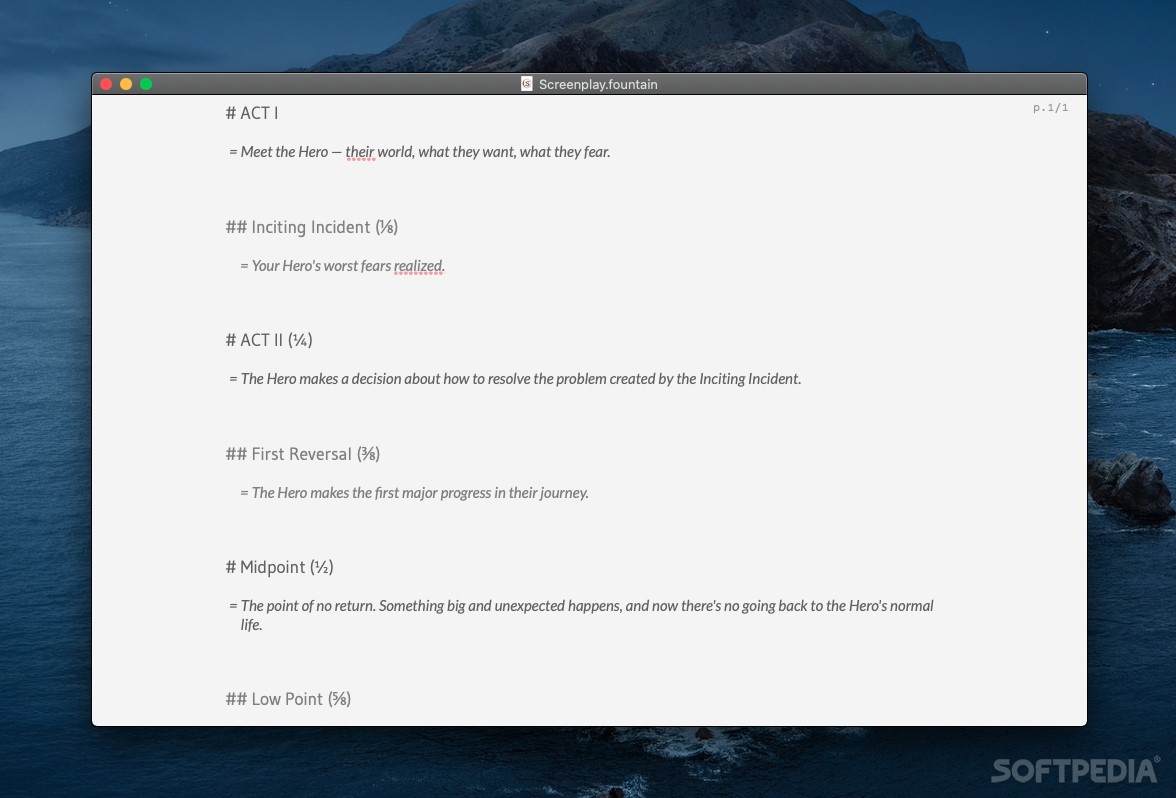

Then go over every single sentence and try to make your point about the action that occurs, within the constraint of the 3-line rule. Once you've written your first draft, go over every single scene.


If you find that all you have is dialogue, perhaps you should consider writing a play, which tells its story largely through dialogue.ġ1. This is the infamous "talking heads" scenario, where not enough is happening on screen, other than dialogue. Each page is equal to a minute of screen time, so five pages, equal to five whole minutes in one location on screen, can be excruciating to watch.įor that matter, even one minute can be excruciating when all we're doing is watching two people talk. Scene length - there is no rule of thumb here, although you should try to keep scenes short, two to four pages at the very most.
#Slugline rules for dates in the year how to
If you have a tendency to over-write, take each phrase and think about how to make it shorter then take your wordy first draft and try to pare it down to fit this rule. DETECTIVE JOHN MACY, 30s, scans its broken windows. YVONNE BURKE, African-American, late 20s.Īn abandoned building.
#Slugline rules for dates in the year windows
Outside an abandoned building in a low-rent district, DETECTIVE JOHN MACY, 30s, turns his intense gaze from the building's broken windows to his partner, DET. Here are a couple of different ways to do it: EXT. For the sake of argument, however, let's say that my four lines can be pared down. While it appears that I've written 4 lines, not 3, in the above example, in screenplay format this would wind up being 3. Sorry if this sounds cynical, but many readers skim the narrative sections, and if they see large blocks of print, they'll skip it all together (thereby missing much of your story). Most "overwriters" are in serious violation of this rule, trying to cram every possible detail of the scene into the description. Don't spend 5 lines after the slugline describing the scene. While you can occasionally stray to 4 or even 5 lines, two or three is the norm. All narrative sections should be no longer than 3 lines. Most "underwriters" are guilty of this approach, giving us almost no indication of what we see on the screen, other than two (or more) people talking.ĩ. We must see who and what is in the scene, and what is happening on screen other than the dialogue. There is a fine line between "under writing" and "over writing," and every reader of screenplays is finely attuned to that fine line. And just in case you think that anyone who reads scripts for a living, has an imagination, think again - it's your job to make them "see" the film as they read your script. Screenplay into a film, including: the reader doing coverage, the assistants at the agencies and production companies, the development executives, producers, studio executives, the director, the actors, etc. In case you think that "the reader" is just that person who does coverage of your script for the studio, you're wrong - the reader is basically every single person who will eventually turn your While a simple but compelling story might be enough to rope in the reader, unless your premise is truly unique, you usually have to give the reader enough information to fully imagine the scene - but not so much detail as to mark you as an amateur. In fact, the only reason to mention any detail whatsoever, instead of just writing -ĭETECTIVE JOHN MACY, 30s, turns to his partner DETECTIVE YVONNE BURKE, late 20s. After all, who are you to decide when this film will be shot? Unless the season is absolutely critical to the story, leave it out. Otherwise, leave it out, together with any other unnecessary description, such as the bare trees, and the late afternoon sun. The only reason to mention it at all is if it's going to play a role in the story. YVONNE BURKE, African-American, late 20s.Įven this much description would be a bit flowery for some people, but it does help to "set the scene" by establishing the feel of the neighborhood (abandoned building, low-rent district), something about our main character (the intensity of his gaze), who else is in the scene (a female, African-American partner - already raising the question as to whether they are friends or foes), and one more thing of interest - the '57 Chevy. Sun glints off the chrome on a '57 Chevy parked outside an abandoned building in a low-rent district, as DETECTIVE JOHN MACY, 30s, turns his intense gaze from the building's many broken windows to his partner, DET.


 0 kommentar(er)
0 kommentar(er)
